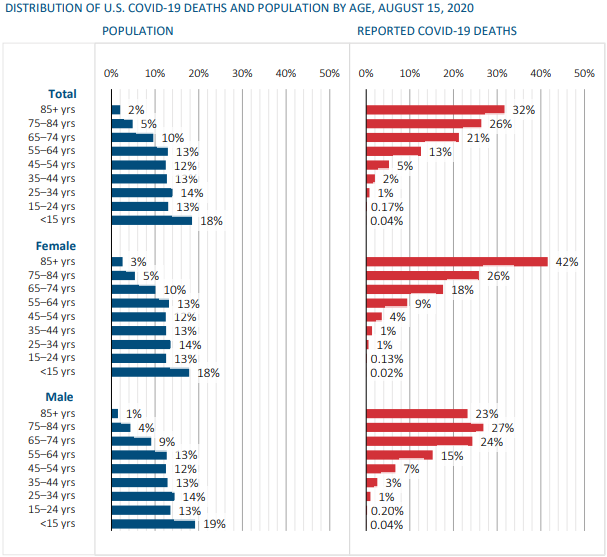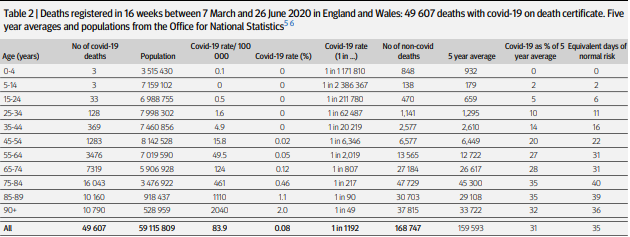*Um breve resumo da Covid-19: riscos, demografia e impactos (tradução dos autores)
Sexta-feira, 18 de setembro de 2020
History, once again, surprises us with an unexpected illness that has changed the daily lives of millions of people around the world. The disease, known as Coronavirus (COVID-19), is caused by the SARS-CoV-2 virus and attacks the respiratory system of humans. The origin of this virus was in China, more specifically in the city of Wuhan, but it reached the whole world with a very high speed, putting humanity once again in a pandemic situation. Affecting all the continents of the globe, the virus caused authorities and organizations to introduce measures of social distance, travel restrictions and quarantine, as a way to delay the transmission of the disease. On March 13, 2020, the United States declared the outbreak a national emergency (HALL et al., 2020).
In this moment of instability, organizations around the world are conducting research, such as the possibility of a vaccine. The Society of Actuaries (SOA), for example, published a study on April 16, 2020, on the impact of COVID-19, giving an overview of everything that was affected by the disease, from hospitalization rate, and its relationship with complications and comorbidities, up to the impact on the population’s daily life, such as mental health, economic contraction and remote work. This study was updated on June 12, reporting more than 7.4 million cases worldwide. In an article by Willis Towers Watson published on March 9, 2020, the author Matthew Edwards made some considerations about the Chinese mortality rates and compared the mortality rate of COVID-19 with that of other epidemics, such as the Spanish Flu, by example. In addition, it also addressed the impact on insurers, how they should have good risk management and be well prepared for times like this.
A new study by the Society of Actuaries (SOA), of August 25, 2020, updated some data and information about a COVID-19 pandemic, such as, for example, the number of reported cases, which until August 23, 2020 were of 23.4 million. The United States ranks first in the number of confirmed cases of COVID-19, with 5.7 million cases as of August 23, 2020, followed by Brazil in second place. In addition, this study also brought up the relationship between the population by age in the United States and death by COVID-19. Thus, we can observe an inverse relationship between these two variables, since the probability of death from COVID-19 increases with age, but the proportion of the population decreases with age (SCHILLING et al., 2020).
This relationship can be easily seen in the chart below:

Source: SCHILLING et al., P. 23., 2020.
SPIEGELHALTER (2020) showed a little of the situation in England and Wales, citing the expressive increase in the number of deaths between March and June 2020 compared to the last five years. It makes a comparison with the “normal” risk of death for individuals and the risk of death during the COVID-19 pandemic. According to him, under normal circumstances, “the average annual risk of death doubles for every seven years of extra age”, but, during the pandemic, “the mortality rate was about 12-13% higher for each older year, corresponding to doubling for every additional five to six years of age, and that relationship is consistent from childhood to old age. ” In the table below, taken from the original text, it is possible to see the scenario by age and the comparison with the past five years. The conclusion was that the population mortality rate during the 16 weeks (112 days) of the epidemic in England and Wales was equivalent to those over 55 who experience about 5 weeks of extra risk of mortality above “normal”, and less and less for younger age groups.

Deaths registered in 16 weeks between 7 March and 26 June 2020 in England and Wales: 49607 deaths with covid-19 on death certificate. Source: SPIEGELHALTER (2020)
So, it is important to ask ourselves about the area most affected by COVID-19: health, not only the health of individuals, but also the public and private health systems. Were health plan operators prepared for the pandemic? Did they have a sufficient solvency margin? What happened to your costs? What happened to hospitalization fees? Were hospitals prepared for this phenomenon? Have health insurance companies lost business customers? Did defaults increase in that period? In addition, the issue of moral hazard, which has always been of great importance for operators, may have been positively affected, since, in this moment of pandemic, individuals decreased the frequency of using the health service, canceling part of the effect of moral hazard. These are just a few of the countless questions that have come up with COVID-19 and that are extremely important for critical thinking and actuarial training.
Therefore, according to Rogers, Mills and Kramer (2020), COVID-19 is threatening hospital capacity and, at the same time, reducing the demand for non-essential health services. This could mean a significant increase in the demand for these services when the pandemic is already under control, and the health system must once again be prepared. This is an important issue not only for hospitals or health insurance companies, but also for actuaries who work in this area, who can use this moment to react positively to this phenomenon, such as learning new models, new techniques and applications and, mainly, how to communicate to the public all the risks and uncertainties that surround us (EATON, 2020).
References
EATON, R. Actuaries in the time of coronavirus: How should actuaries think and spend their time with regard to the pandemic? The Actuary, April, 2020 Available in: <https://theactuarymagazine.org/actuaries-in-the-time-of-coronavirus/> Access in: June 22, 2020.
EDWARDS, M. COVID-19 (coronavirus): An actuary’s perspective: How the spread and mortality rate of COVID-19 might affect insurers and healthcare. Willis Towers Watson, March 9, 2020. Available in: <https://www.willistowerswatson.com/en-US/Insights/2020/03/COVID-19-coronavirus-an-actuarys-perspective> Access in: June 16, 2020.
HALL, R. D. et.al. Impact of COVID-19. Society of Actuaries. April 16, 2020.
HALL, R. D. et al. Impact of COVID-19. Society of Actuaries. June 12, 2020.
ROGERS, H.; MILLS, C; KRAMER, M. J. Estimating the impact of COVID-19 on healthcare costs in 2020. Milliman White Paper, April, 2020.
SCHILLING, L. A. et al. COVID-19 Update: Key Statistics on Cases, Deaths and Hospitalizations. Society of Actuaries. August 25 2020. Available at: <https://www.soa.org/globalassets/assets/files/resources/research-report/2020/08-25-covid-19-key-stats.pdf> Access in: 11 September 2020.
SPIEGELHALTER, D. Use of “normal” risk to improve understanding of dangers of covid-19. 09 September 2020.
WESTON, S.; FRIEMAN, M. B. COVID-19: Knowns, Unknowns, and Questions. mSphere, v. 5, n. 2, 2020. Available in: <https://msphere.asm.org/content/5/2/e00203-20.full> Access in: March 30, 2020.
____________________
Autores: Nathaly Oliveira
(Graduanda em Ciências Atuariais)
Luisa Terra e Reinaldo Marques
(Professores do Instituto de Ciências Sociais Aplicadas)















